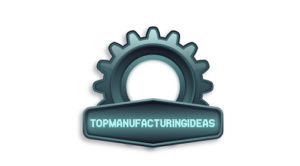Innovations in Pill Bottle Design: Ensuring Safety and Compliance
As the pharmaceutical industry evolves, so too does the need for secure, compliant, and user-friendly packaging. Pill bottles seemingly simple containers play a critical role in ensuring medication safety. Pharmaceutical packaging is constantly changing. Recent innovations in their design reflect a growing emphasis on child-resistant features, tamper-evident mechanisms, and sustainable materials. These improvements aren’t just regulatory box-ticking they’re essential for protecting vulnerable users and maintaining the integrity of medical products throughout their lifecycle.
The Importance of Child-Resistant Packaging
Child-resistant (CR) packaging was developed to reduce the risk of accidental ingestion of harmful substances by children. In countries like New Zealand and Australia, standards for CR packaging are stringent, with many everyday medicines now legally required to include safety mechanisms that can deter a child’s curiosity.
Modern CR designs often utilise push-and-turn or squeeze-and-turn caps that are intuitive for adults yet difficult for children to open. But as our population ages, manufacturers are also focused on ergonomic improvements ensuring that safety doesn’t come at the expense of accessibility. Solutions like easier-grip caps and tactile feedback mechanisms make medication access manageable for older adults or people with arthritis, without compromising safety standards.
Tamper-Evident Features: A Layer of Trust
Tamper-evident (TE) packaging has become a cornerstone of pharmaceutical safety. These features provide visual evidence if a product has been interfered with, serving both a protective and trust-building function. Common tamper-evident mechanisms include induction seals, shrink bands, and breakable snap caps.
The integration of TE features is not only best practice but a legal requirement in many jurisdictions for over-the-counter (OTC) and prescription medications. These mechanisms provide consumers with reassurance, ensuring that the contents are safe and unchanged from the point of manufacturing to final use.
Material Selection: HDPE and Polypropylene
Material choice plays a crucial role in both safety and sustainability. Two of the most widely used plastics in pill bottle design are high-density polyethylene (HDPE) and polypropylene (PP). HDPE is valued for its durability and moisture resistance—an essential feature for protecting pharmaceutical products from environmental degradation. Polypropylene offers excellent structural integrity and is particularly suitable for closures due to its fatigue resistance.
These materials are not only reliable but also increasingly recyclable. Many pharmaceutical manufacturers are adopting post-consumer recycled HDPE, contributing to a more circular packaging lifecycle without compromising product performance.
Innovations on the Horizon
As technology advances, so too does the potential for smart packaging in the pharmaceutical sector. Some companies are developing pill bottles with embedded electronics that track usage, provide reminders, or send alerts when a dose is missed. These features not only improve compliance but could potentially reduce hospital admissions related to medication errors or non-adherence.
Biodegradable plastics and mono-material containers (which are easier to recycle) are also in development, signaling a shift toward even more sustainable pharmaceutical packaging solutions.
Supporting Resources
If you’re exploring compliant pill bottle options or researching how materials like HDPE and polypropylene are used in real-world applications, this product overview of HDPE TE Tablet Bottles offers a useful reference for current market offerings that align with safety and regulatory standards.
Conclusion
The evolution of pill bottle design is a reflection of the pharmaceutical industry’s broader goals: to enhance safety, ensure compliance, and improve the patient experience. With a focus on child-resistance, tamper-evidence, and sustainable materials, today’s pill bottles are smarter and safer than ever.
As new technologies and materials continue to emerge, the packaging of tomorrow will do even more to support safe, effective, and environmentally responsible healthcare.
